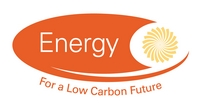Projects
Projects: Projects for Investigator |
||
| Reference Number | InnUK/131762/01 | |
| Title | Submersible treatment of pond waters | |
| Status | Completed | |
| Energy Categories | Nuclear Fission and Fusion(Nuclear Fission, Nuclear supporting technologies) 100%; | |
| Research Types | Applied Research and Development 100% | |
| Science and Technology Fields | BIOLOGICAL AND AGRICULTURAL SCIENCES (Biological Sciences) 20%; PHYSICAL SCIENCES AND MATHEMATICS (Chemistry) 80%; |
|
| UKERC Cross Cutting Characterisation | Sociological economical and environmental impact of energy (Environmental dimensions) 100% | |
| Principal Investigator |
Project Contact No email address given Arvia Technology Limited |
|
| Award Type | Feasibility Study | |
| Funding Source | Innovate-UK | |
| Start Date | 01 February 2015 | |
| End Date | 31 January 2016 | |
| Duration | 12 months | |
| Total Grant Value | £105,837 | |
| Industrial Sectors | ||
| Region | North West | |
| Programme | Competition Call: 1403_FS_ENE_GEN_DCNS - Developing the civil nuclear supply chain FS. Activity Developing the civil nuclear supply chain | |
| Investigators | Principal Investigator | Project Contact , Arvia Technology Limited (100.000%) |
| Web Site | ||
| Objectives | ||
| Abstract | Some of the most significant radioactive risks are present in the legacy fuel storage ponds at Sellafield. These are 50 - 60 years old and are in need of major attention. However, the presence of algal and bacterial blooms in these ponds is hindering in the retreival process, slowing down the rate of reducing the hazard. This project will aim to provide a novel treatment approach by using a subersible system to treat the water. Based on the Arvia process of adsorption coupled with electrochemical oxidation, this approach has the benefit that it requires no space around the tanks (which are heavily congested); does not require the removal of radioactive water from the tank (reducing risk); makes use of the existing tank and water (reducing shielding requirements) and will require minimal operator involvement (minimising operator dose). In addition if this treatment process is proven for a site like Sellafield, it opens the market for this technology for other nuclear operators. A key possibility would be the treatment of water stored in the storage tanks at Fukushima, where a large number of units could be deployed to make the tank water suitable for further treatment. | |
| Data | No related datasets |
|
| Projects | No related projects |
|
| Publications | No related publications |
|
| Added to Database | 03/12/15 | |



